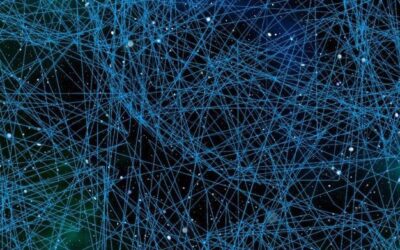What is the Body Brain: Into The Psyche-Soma
 In this article, we’ll delve into a phenomenological understanding of the different parts of the brain and how they contribute to our experiences. This discussion aims to provide an experiential explanation rather than a neurobiological or neuroscience-based analysis. While books on the topic, such as those focusing on trauma or the limbic system, offer detailed scientific explanations, our focus here is on how these brain regions feel during emotional and cognitive processes. So, let’s take a different perspective and explore the prefrontal cortex and subcortical brain regions.
In this article, we’ll delve into a phenomenological understanding of the different parts of the brain and how they contribute to our experiences. This discussion aims to provide an experiential explanation rather than a neurobiological or neuroscience-based analysis. While books on the topic, such as those focusing on trauma or the limbic system, offer detailed scientific explanations, our focus here is on how these brain regions feel during emotional and cognitive processes. So, let’s take a different perspective and explore the prefrontal cortex and subcortical brain regions.
The Prefrontal Cortex
One important region of the brain is the prefrontal cortex, located right here at the front. Interestingly, in old-school ice pick lobotomies, this is the area that was removed, diminishing aspects of personality while leaving basic functions intact. The prefrontal cortex plays a significant role in our cognitive processes and what we commonly refer to as the ego. It encompasses conscious thoughts, especially those expressed through language. For example, when watching a movie, we might think, “That’s clever! The director is referencing an older tradition but subverting it.” These conscious thoughts are often positive and involve cognition and reasoning. However, there is much cognition beneath the surface of language, which we will explore further.
The Subcortical Brain
Beyond cognition and language lies the subcortical brain, a crucial part often overlooked in cognitive therapy or discussions focused solely on cognition. The subcortical brain refers to regions beneath cognition and language, which do not rely on words for their functioning. This part of the brain includes structures like the amygdala, basal ganglia, and other areas related to our deep emotional system. It is the oldest part of our brain, connecting us to our reptilian ancestry. Unlike cognitive processes, the subcortical brain operates without relying on intellect or intelligence.
The Role of the Subcortical Brain
The subcortical brain is responsible for immediate responses and reflexes, much like those observed in reptiles. It quickly assesses stimuli, determining whether to mate, flee, or freeze. This type of response does not require intellectual analysis or conscious decision-making. This aspect of the brain is often misunderstood or overlooked by individuals who cling to an exclusively intellectual and materialistic worldview. The subcortical brain encompasses knee-jerk reactions and reflexes that occur outside our conscious control, such as the doctor’s tap on our leg that causes an involuntary kick.
Application in Therapy
Understanding the interplay between the prefrontal cortex and subcortical brain regions is crucial in therapy. Many effective therapy modalities aim to teach individuals to let go of intellectual control and experience their emotions fully. This can be challenging because our emotional experiences are programmed throughout our lives. For example, a traumatic event during childhood might teach us that vulnerability leads to harm, prompting us to adopt rigid defenses. These responses are not intellectual but originate from the subcortical brain, deeply connected to our emotions and bodily sensations.
Language and the Subcortical Brain
Attempting to control subcortical brain processes purely through language and cognitive strategies is often ineffective. For instance, advising someone to clap their hands or use a rubber band to curb an impulse fails to address the subcortical processes happening beneath cognition. To create lasting change, therapy must guide individuals to access and rewire these deeper brain systems. Therapy modalities like internal family systems, gestalt therapy, somatic therapies, and trauma-informed yoga recognize the importance of engaging the subcortical brain beyond language and cognitive processes. These approaches aim to tap into the wisdom of the subcortical brain and integrate it with the prefrontal cortex to promote healing and transformation.
Integration of the Prefrontal Cortex and Subcortical Brain
The key to therapeutic progress lies in integrating the prefrontal cortex and subcortical brain. Rather than suppressing or dismissing the subcortical responses, therapy can help individuals develop a compassionate and curious relationship with their deep emotional system. By cultivating awareness and understanding of their subcortical processes, individuals can navigate their emotional landscape more effectively.
Mindfulness practices, such as meditation, can be beneficial in this integration process. Mindfulness allows individuals to observe their thoughts, emotions, and bodily sensations without judgment. By cultivating a non-reactive and compassionate stance towards their experiences, individuals can create space for the subcortical brain to be acknowledged and heard.
Emotional Regulation and the Subcortical Brain
One important aspect of working with the subcortical brain is emotional regulation. The subcortical brain is closely linked to our emotional responses, and understanding how to regulate these responses can be transformative. Traditional cognitive-behavioral approaches often focus on modifying thoughts to influence emotions, but the subcortical brain requires a different approach.
Approaches like somatic experiencing, sensorimotor psychotherapy, or dialectical behavior therapy (DBT) recognize the significance of engaging the body and directly addressing physiological and sensory experiences. These approaches incorporate techniques that promote grounding, self-soothing, and regulation of the nervous system, which can help individuals navigate intense emotional states originating from the subcortical brain.
Take Aways
The prefrontal cortex and subcortical brain are integral parts of our experience as human beings. While the prefrontal cortex represents conscious thoughts and cognition, the subcortical brain underlies our deep emotional responses and reflexes. Understanding the interplay between these regions is crucial for personal growth and therapeutic progress. By embracing a phenomenological perspective that honors the experiential nature of these brain regions, we can create a more holistic approach to therapy and self-exploration. Recognizing the wisdom of the subcortical brain and integrating it with the prefrontal cortex allows for a deeper understanding of ourselves and paves the way for transformative healing.
So, let’s remember to honor both the cognitive and emotional aspects of our brain, embracing the interplay between the prefrontal cortex and the subcortical brain as we navigate the complexities of our human experience.
Did you enjoy this article? Checkout the podcast here: https://gettherapybirmingham.podbean.com/
References:
Jung, C. G. (1969). The archetypes and the collective unconscious. Princeton University Press.
Adler, A. (1927). Understanding human nature. Greenberg.
Angelou, M. (1994). Wouldn’t take nothing for my journey now. Bantam Books.
Rogers, C. R. (1961). On becoming a person: A therapist’s view of psychotherapy. Houghton Mifflin.
Yalom, I. D. (1980). Existential psychotherapy. Basic Books.
Maslow, A. H. (1968). Toward a psychology of being. Van Nostrand.
Freud, S. (1923). The ego and the id. W. W. Norton & Company.
Ellis, A. (1962). Reason and emotion in psychotherapy. Lyle Stuart.
Frankl, V. E. (1959). Man’s search for meaning. Beacon Press.
Kernberg, O. F. (1975). Borderline conditions and pathological narcissism. Jason Aronson.
Further Reading:
Brown, B. (2012). Daring greatly: How the courage to be vulnerable transforms the way we live, love, parent, and lead. Gotham Books.
Goleman, D. (1995). Emotional intelligence: Why it can matter more than IQ. Bantam Books.
Miller, A. (1981). The drama of the gifted child: The search for the true self. Basic Books.
Peck, M. S. (1978). The road less traveled: A new psychology of love, traditional values, and spiritual growth. Simon & Schuster.
Siegel, D. J. (2010). Mindsight: The new science of personal transformation. Bantam Books.
Van der Kolk, B. A. (2014). The body keeps the score: Brain, mind, and body in the healing of trauma. Viking.
Bradshaw, J. (1988). Healing the shame that binds you. Health Communications.
Maltz, M. (1960). Psycho-cybernetics: A new way to get more living out of life. Prentice-Hall.
Seligman, M. E. P. (2011). Flourish: A visionary new understanding of happiness and well-being. Free Press.
Dweck, C. S. (2006). Mindset: The new psychology of success. Random House.























0 Comments